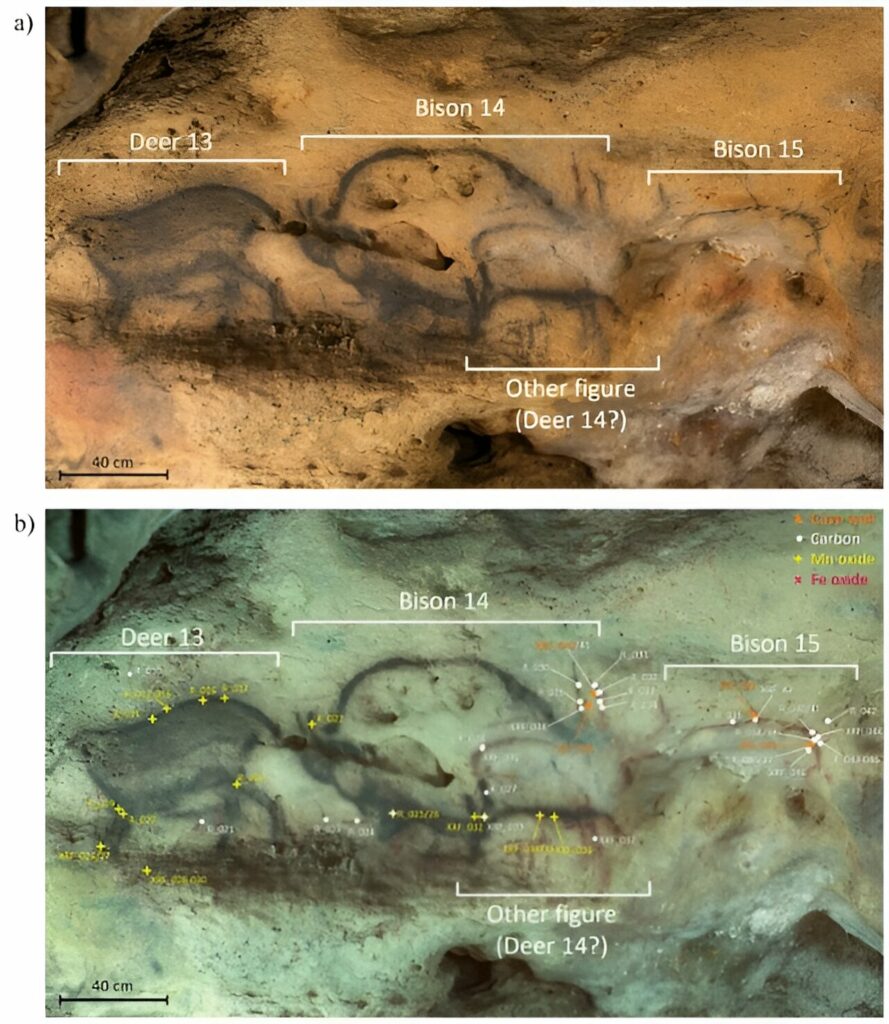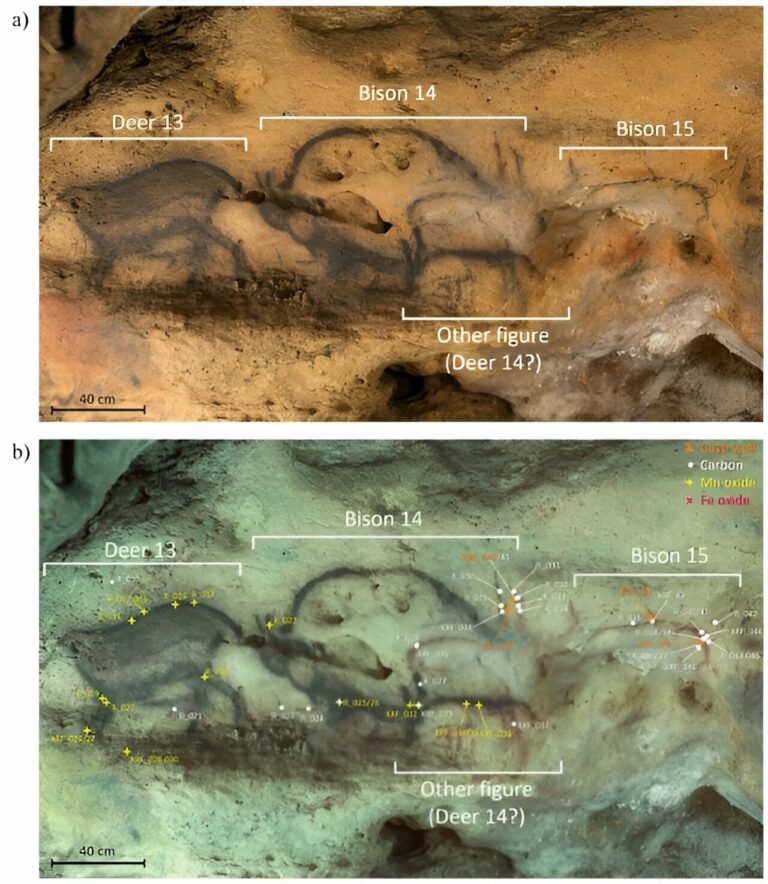Unearthing Carbon-Based Cave Art in France’s Dordogne Region Opens the Door to Accurate Radiocarbon Dating.
The southern region of France, known as Dordogne, boasts over 200 caves adorned with vibrant Paleolithic art, yet the age of this artwork remains largely unknown. The use of iron- or manganese-oxide-based materials in its coloring has hindered radiocarbon dating efforts, leading to a general belief that it originated during the Magdalenian Period, spanning from 12,000 to 17,000 years ago.
In a significant development, a research team from the Center de Recherche et de Restauration des Musées de France has unveiled the initial identification of black carbon-based art in Dordogne’s Font-de-Gaume cave. This breakthrough not only holds the potential for precise radiocarbon dating but also prompts a reevaluation of the existing art in this cave and others throughout the region.
The team’s findings, published under the title “First discovery of charcoal-based prehistoric cave art in Dordogne,” are detailed in Scientific Reports.

In the latter part of February 2020, the team unearthed drawings made with charcoal in the primary galleries of the cave, colloquially referred to as “Bison Cave” due to its 80 depictions of bison, as well as depictions of deer, horses, mammoths, and various other images. Animals constitute approximately two-thirds of the entire art collection in the Font-de-Gaume cave, with the remaining third comprised of tectiforms.
The bison portrayals exhibit a range of styles, with some depicted in two or more shades, including variations from black to brown and red to yellow. Others are predominantly rendered in black and red, or solely in black. In 1902, Henri Moissan, the recipient of the 1906 Nobel Prize in Chemistry, utilized samples of coloring matter from the art to identify components of iron and manganese oxide. Presently, the Font-de-Gaume cave enjoys protected status as a UNESCO World Heritage site, and authorities only permit sampling in exceedingly rare cases.
Non-invasive analytical methods
Consequently, researchers have turned to non-invasive analytical techniques. In this study, the researchers employed both visible-light and infrared photography, the overlay of visible-light and infrared images, portable X-ray fluorescence (pXRF), and portable micro-Raman spectroscopy to gather their data. These methods unveiled carbon-based drawings beneath others recognized to have been crafted with pigments of iron and manganese oxide.
Through the overlay of visible-light and infrared images taken from the same perspective, the team generated false-color infrared photography (FCIR) images. The camera and filter utilized for capturing the infrared images only allowed radiation wavelengths above 900 nm. Software integration of these images with the green and red layers of visible-light images produced FCIR images, facilitating the distinction of various materials used in creating the images. Micro-Raman spectroscopy was instrumental in detecting carbon-based compounds within the images and identifying specific mineralogical phases of the iron and manganese oxide-based pigments.
This spectroscopic method also enabled the identification of images specifically created with charcoal-black-based compounds as opposed to other carbon-based materials. Simultaneously, the use of pXRF allowed the researchers to differentiate between various kinds of manganese-oxide compounds present in the black figures.
Regional differences and similarities
The team observes that the diverse pigment materials may signify “distinct creation phases, aligning with observations in other comparable adorned caves” in the Dordogne region, including the renowned Lascaux cave, discovered in 1940. Lascaux’s depictions employ cryptomelane as the basis for manganese-oxide pigments, while Font-de-Gaume relies on romanechite and pyrolusite for its Mn-O colorations.
Furthermore, the paper highlights parallels between the black pigment used in drawings at Font-de-Gaume and those found in the nearby Rouffignac caves. Looking forward, the identification of charcoal-based figures in the Font-de-Gaume cave brings forth new possibilities for precise radiocarbon dating, enhanced understanding of creation phases, and potentially even detailed inter-regional comparisons.
This article is republished from PhysORG under a Creative Commons license. Read the original article.
Do not forget to share your opinion with us to provide you with the best posts !




0 Comments